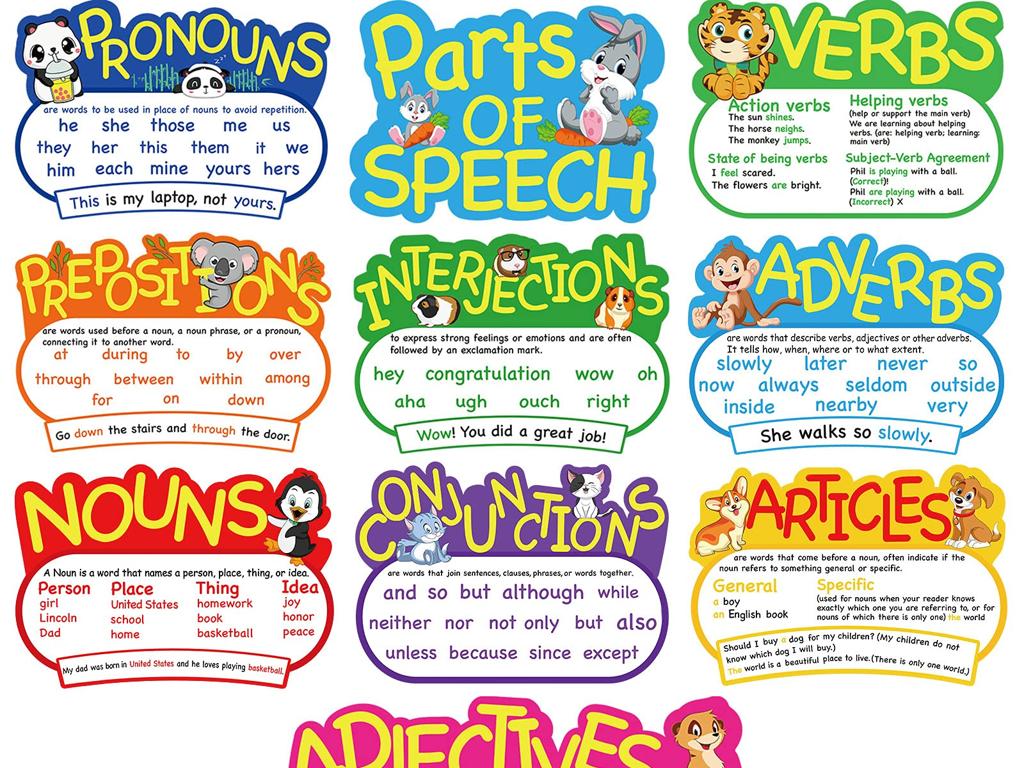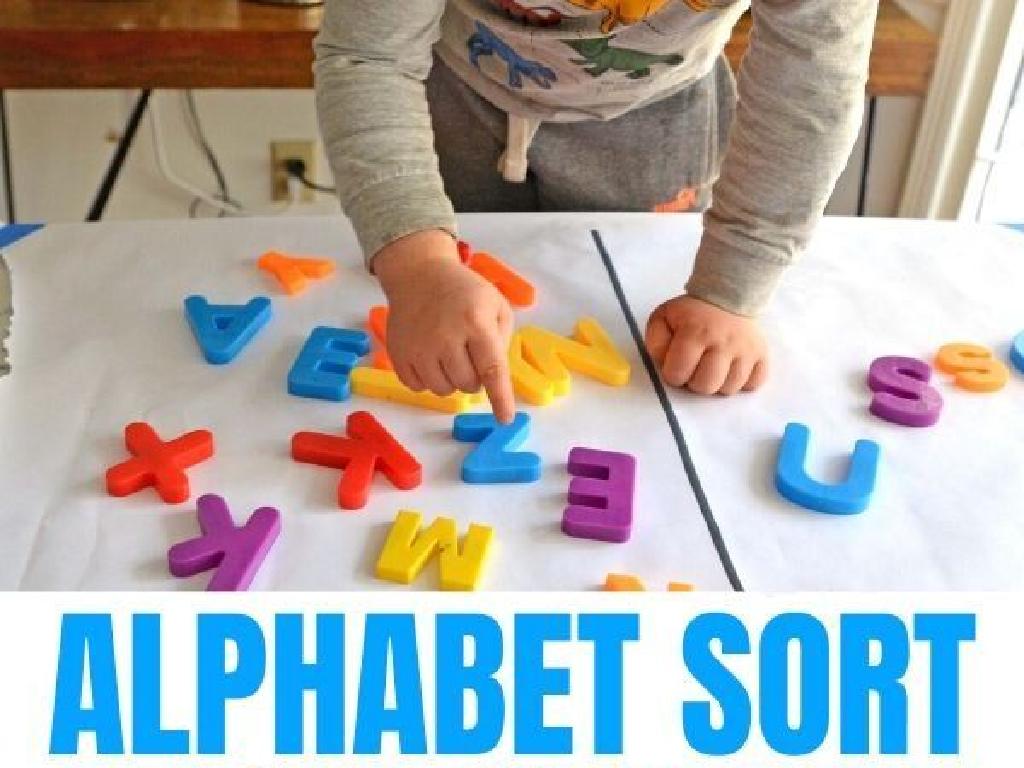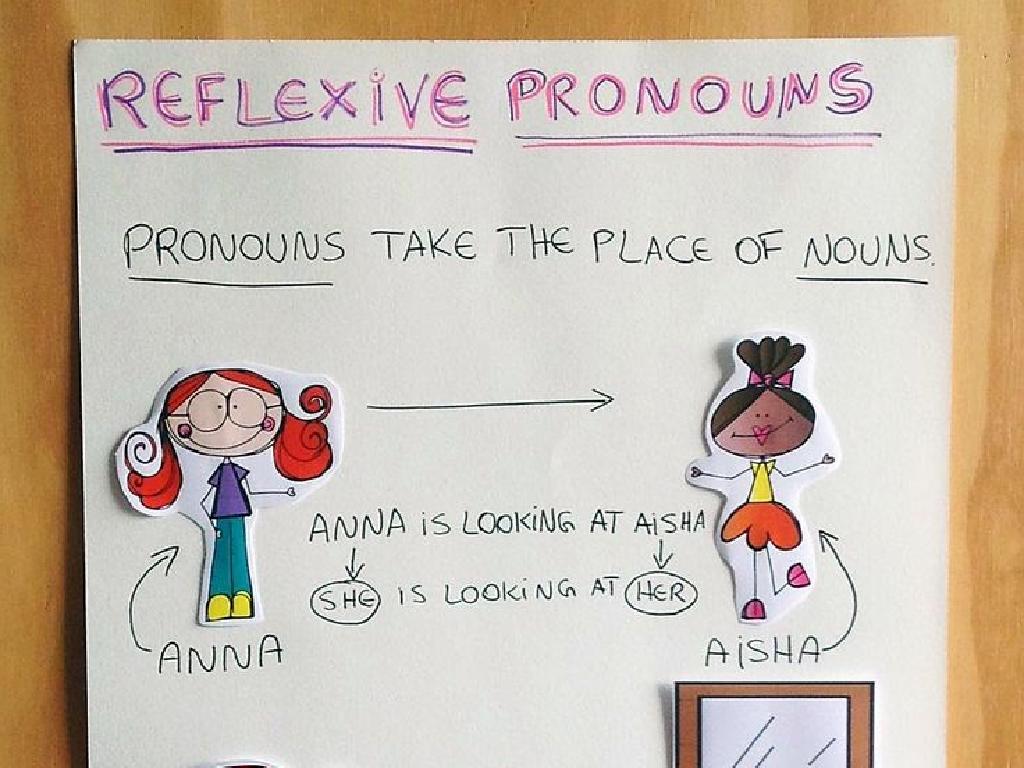Equivalent Ratios: Word Problems
Subject: Math
Grade: Seventh grade
Topic: Ratios, Rates, And Proportions
Please LOG IN to download the presentation. Access is available to registered users only.
View More Content
Welcome to Ratios: Understanding and Application
– Define equivalent ratios
– Ratios compare two quantities, like 2 apples for every 3 oranges.
– Importance of ratios in daily life
– Ratios help in cooking, shopping, and understanding odds in games.
– Identify ratios in real-world scenarios
– Examples: recipes, maps, or mixing paints.
– Solve ratio word problems
– Use equivalent ratios to find missing values in problems.
|
This slide introduces students to the concept of equivalent ratios, emphasizing their relevance in everyday life. Start by defining ratios and their notation. Discuss how ratios are used in various situations such as cooking, where a recipe might call for a 2:1 ratio of sugar to salt, or in shopping deals like ‘buy 2, get 1 free’. Highlight the importance of understanding ratios to make informed decisions. Then, guide students on how to identify ratios in real-life examples and how to apply their knowledge to solve word problems involving equivalent ratios. Encourage students to think of additional examples where they encounter ratios daily.
Understanding Ratios
– Definition of a ratio
– A ratio shows the relative sizes of two or more values.
– Ratios: Terms and notation
– Terms like ‘to’, ‘:’, and ‘/’ denote ratios, e.g., 3 to 4, 3:4, 3/4.
– Simple ratio examples
– If there are 3 apples and 4 oranges, the ratio of apples to oranges is 3:4.
– Applying ratios to problems
|
This slide introduces the concept of ratios, which are a fundamental part of understanding relationships between quantities in mathematics. A ratio is a way to compare two quantities by division, showing how many times one value contains another. Familiarize students with different notations and terminology used to express ratios. Provide simple, relatable examples to illustrate the concept, such as comparing the number of apples to oranges. Encourage students to think of ratios in terms of parts of a whole, and how they can apply this understanding to solve word problems involving equivalent ratios.
Understanding Equivalent Ratios
– Defining equivalent ratios
– Ratios with the same value but different numbers, e.g., 1:2 and 2:4
– Multiplication & division to find equivalents
– Multiply or divide both terms of a ratio by the same number to find equivalents
– Real-world examples of equivalent ratios
– Recipes, map scales, and buy-one-get-one deals
– Practice with word problems
|
This slide introduces the concept of equivalent ratios, which are two ratios that express the same relationship between numbers, even though the numbers themselves may be different. Emphasize that by multiplying or dividing both terms of a ratio by the same non-zero number, students can generate an equivalent ratio. Provide relatable examples such as recipes (doubling ingredients to serve more people) or map scales (1 inch represents 100 miles). Encourage students to think of their own examples. Conclude with word problems to apply their understanding of equivalent ratios in practical scenarios. This will help solidify their grasp of the concept and prepare them for more complex problems.
Solving Word Problems with Equivalent Ratios
– Identifying ratios in problems
– Look for pairs of numbers that compare quantities.
– Comprehending the question
– What is the problem asking you to find?
– Breaking down the problem
– Divide the problem into manageable parts.
– Step-by-step problem-solving
– Follow the steps to find the ratio.
|
This slide introduces students to the process of solving word problems involving equivalent ratios. Start by teaching students how to identify ratios within the context of a word problem by looking for comparative quantities. Emphasize the importance of understanding what the question is asking, which is crucial for determining the correct approach to the problem. Guide students to break down complex problems into smaller, more manageable steps, making it easier to solve. Finally, walk through a step-by-step method to find the equivalent ratio, ensuring students grasp the concept of maintaining proportionality between ratios. Provide examples and practice problems to reinforce these skills.
Solving Equivalent Ratio Word Problems
– Walkthrough of a sample problem
– For example, if a recipe needs 2 eggs for 1 cake, how many eggs for 3 cakes?
– Highlight common errors
– Such as misreading the question or incorrect multiplication/division
– Share problem-solving tips
– Read carefully, identify ratios, and use cross-multiplication
– Encourage practice with examples
|
This slide aims to equip students with the skills to tackle word problems involving equivalent ratios. Start by solving a sample problem step by step, ensuring to explain each stage of the process. Discuss common mistakes, such as misinterpreting the question or making arithmetic errors, and how to avoid them. Offer tips like careful reading, identifying known and unknown ratios, and applying cross-multiplication to find the missing value. Encourage students to practice with various examples to build confidence and proficiency in solving ratio word problems.
Equivalent Ratios: Practice Problems
– Work on problems as a class
– Discuss problem-solving strategies
– Break down the problem, look for patterns, and use ratio tables
– Apply strategies to find equivalent ratios
– Use cross multiplication to check if ratios are equivalent
– Share solutions and compare methods
|
This slide is designed to engage students in a collaborative problem-solving activity focused on equivalent ratios. Start by presenting a word problem to the class and encourage them to work together to find a solution. Discuss various strategies such as breaking down the problem into smaller parts, identifying patterns, and using ratio tables or cross multiplication to find equivalent ratios. Encourage students to apply these strategies and share their solutions with the class. This will allow them to see different methods to approach the same problem, fostering a deeper understanding of the concept. Provide guidance and support as needed, and ensure that each student is actively participating and contributing to the discussion.
Class Activity: Ratio Scavenger Hunt
– Find objects to form ratios
– Record your ratios
– Compare ratios with peers
– Discuss equivalent ratios
– Are the ratios the same or different? Why?
|
This interactive activity encourages students to explore the concept of ratios using tangible items in the classroom. Students should look for objects they can pair to create ratios, such as pencils to erasers or windows to doors. After recording their findings, they’ll compare with classmates to see if they can find equivalent ratios. The discussion should focus on understanding the properties of equivalent ratios and how to determine if two ratios express the same relationship. For the teacher: Prepare a list of suggested items to look for, ensure students understand how to form a ratio, and guide the discussion towards the concept of equivalence in ratios. Possible variations of the activity could include finding ratios in textbook images, using colors in artwork, or comparing quantities in snack packs.
Wrapping Up: Equivalent Ratios
– Review key concepts learned
– Homework: Solve additional problems
– Practice with different word problems at home
– Apply knowledge to new situations
– Use ratios to find equivalent relationships
– Share solutions in next class
|
As we conclude today’s lesson on equivalent ratios, it’s important to recap the main points we’ve covered. Ensure students understand how to identify and solve equivalent ratio problems. For homework, assign a set of word problems that require students to apply the concepts learned in class to new situations. This practice will help solidify their understanding and prepare them for more complex problems. Encourage students to attempt the problems independently but remind them that they can collaborate with peers if they’re stuck. In the next class, we’ll discuss the solutions and address any challenges faced. This will also be an opportunity for peer learning and for students to explain their reasoning, which reinforces their comprehension.






